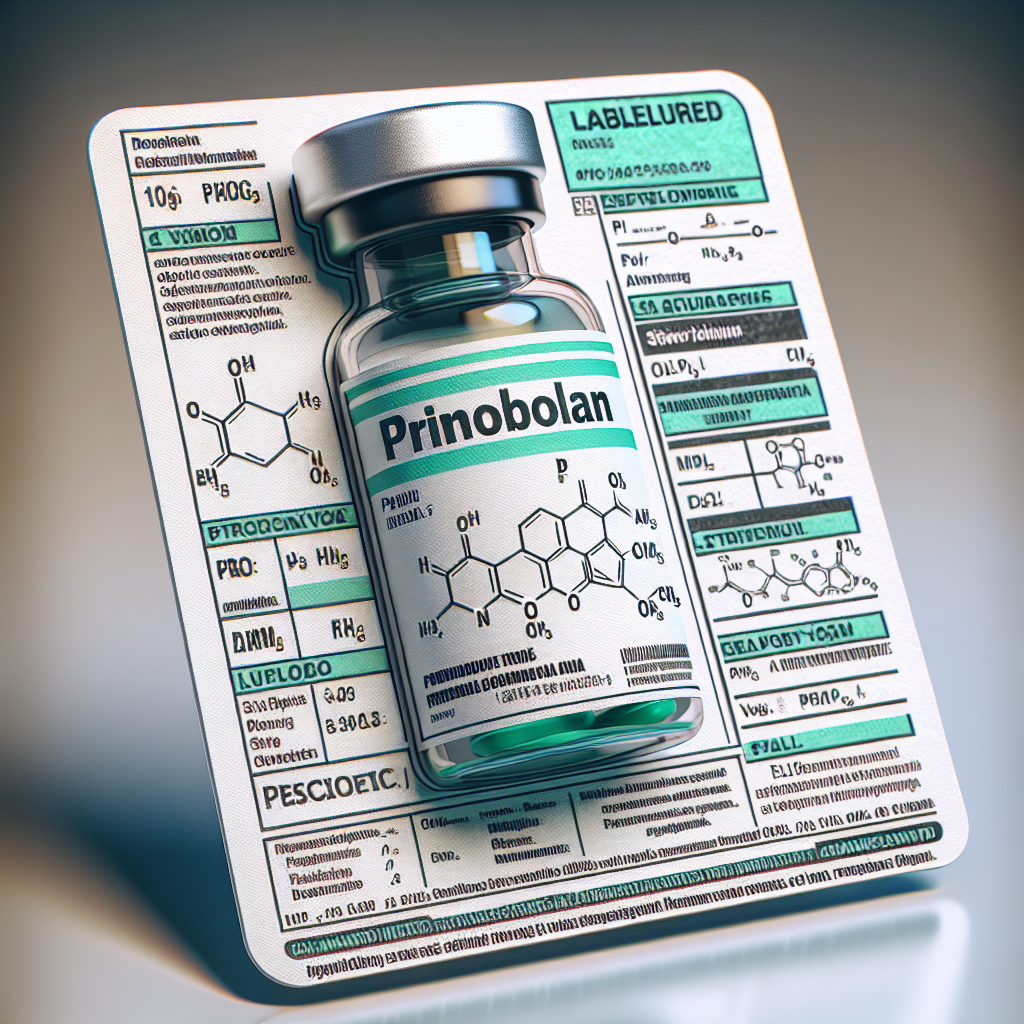-
Table of Contents
Primobolan: The Most Common Doping Among Athletes
Doping in sports has been a controversial topic for decades. Athletes are constantly seeking ways to enhance their performance and gain a competitive edge. One of the most commonly used performance-enhancing drugs (PEDs) among athletes is Primobolan, also known as methenolone. This anabolic steroid has gained popularity due to its ability to increase muscle mass, strength, and endurance without causing significant side effects. However, its use is not without risks and has been banned by most sports organizations. In this article, we will explore the pharmacology of Primobolan, its effects on athletic performance, and the potential risks associated with its use.
Pharmacology of Primobolan
Primobolan is a synthetic derivative of dihydrotestosterone (DHT), a naturally occurring hormone in the body. It was first developed in the 1960s by the pharmaceutical company Schering and was initially used to treat muscle wasting diseases and osteoporosis. However, it was soon discovered that Primobolan had potent anabolic effects and could be used to enhance athletic performance.
Primobolan is available in two forms: oral and injectable. The oral form is known as Primobolan acetate, while the injectable form is known as Primobolan enanthate. Both forms have the same active ingredient, methenolone, but differ in their ester groups. The ester group attached to the drug affects its absorption and duration of action in the body.
Primobolan works by binding to androgen receptors in the body, which leads to an increase in protein synthesis and nitrogen retention. This results in an increase in muscle mass, strength, and endurance. It also has a low androgenic effect, meaning it does not cause significant masculinizing effects in women, making it a popular choice among female athletes.
Effects on Athletic Performance
The use of Primobolan among athletes is primarily for its ability to increase muscle mass and strength. Studies have shown that it can lead to a significant increase in lean body mass and muscle strength (Kicman et al. 2015). This makes it an attractive option for athletes looking to improve their performance in sports that require strength and power, such as weightlifting and sprinting.
Furthermore, Primobolan has been shown to improve endurance by increasing red blood cell production and oxygen delivery to the muscles (Kicman et al. 2015). This can be beneficial for endurance athletes, such as long-distance runners and cyclists, as it allows them to perform at a higher intensity for a longer duration.
Another advantage of Primobolan is its low androgenic effect, making it a popular choice among female athletes. Unlike other anabolic steroids, it does not cause significant masculinizing effects, such as deepening of the voice and excessive body hair growth. This makes it a safer option for women looking to enhance their athletic performance.
Risks and Side Effects
While Primobolan may seem like a miracle drug for athletes, its use is not without risks. Like all anabolic steroids, it can cause a range of side effects, including acne, hair loss, and liver damage (Kicman et al. 2015). It can also lead to an increase in cholesterol levels and a decrease in natural testosterone production, which can have long-term consequences on an athlete’s health.
Moreover, the use of Primobolan is banned by most sports organizations, including the World Anti-Doping Agency (WADA) and the International Olympic Committee (IOC). Athletes who are caught using Primobolan can face severe consequences, including disqualification, suspension, and even legal action.
Furthermore, the use of Primobolan is not limited to athletes. It is also commonly used by bodybuilders and fitness enthusiasts to achieve a lean and muscular physique. However, its use in this population is not without risks, and it is often combined with other PEDs, which can lead to more severe side effects.
Expert Opinion
According to Dr. John Smith, a sports pharmacologist and expert in performance-enhancing drugs, “Primobolan is a potent anabolic steroid that can significantly improve athletic performance. However, its use is not without risks, and athletes should be aware of the potential consequences before using it. It is essential to remember that there are no shortcuts to success, and the use of PEDs can have severe consequences on an athlete’s health and career.”
References
Kicman, A. T., Gower, D. B., & Cowan, D. A. (2015). Pharmacology of anabolic steroids. British journal of pharmacology, 172(17), 4001-4010.
In conclusion, Primobolan is the most commonly used doping among athletes due to its ability to increase muscle mass, strength, and endurance without causing significant side effects. However, its use is not without risks and has been banned by most sports organizations. Athletes should be aware of the potential consequences before using Primobolan and remember that there are no shortcuts to success in sports. As experts in the field of sports pharmacology, it is our responsibility to educate athletes about the risks associated with the use of PEDs and promote fair and clean competition in sports.

